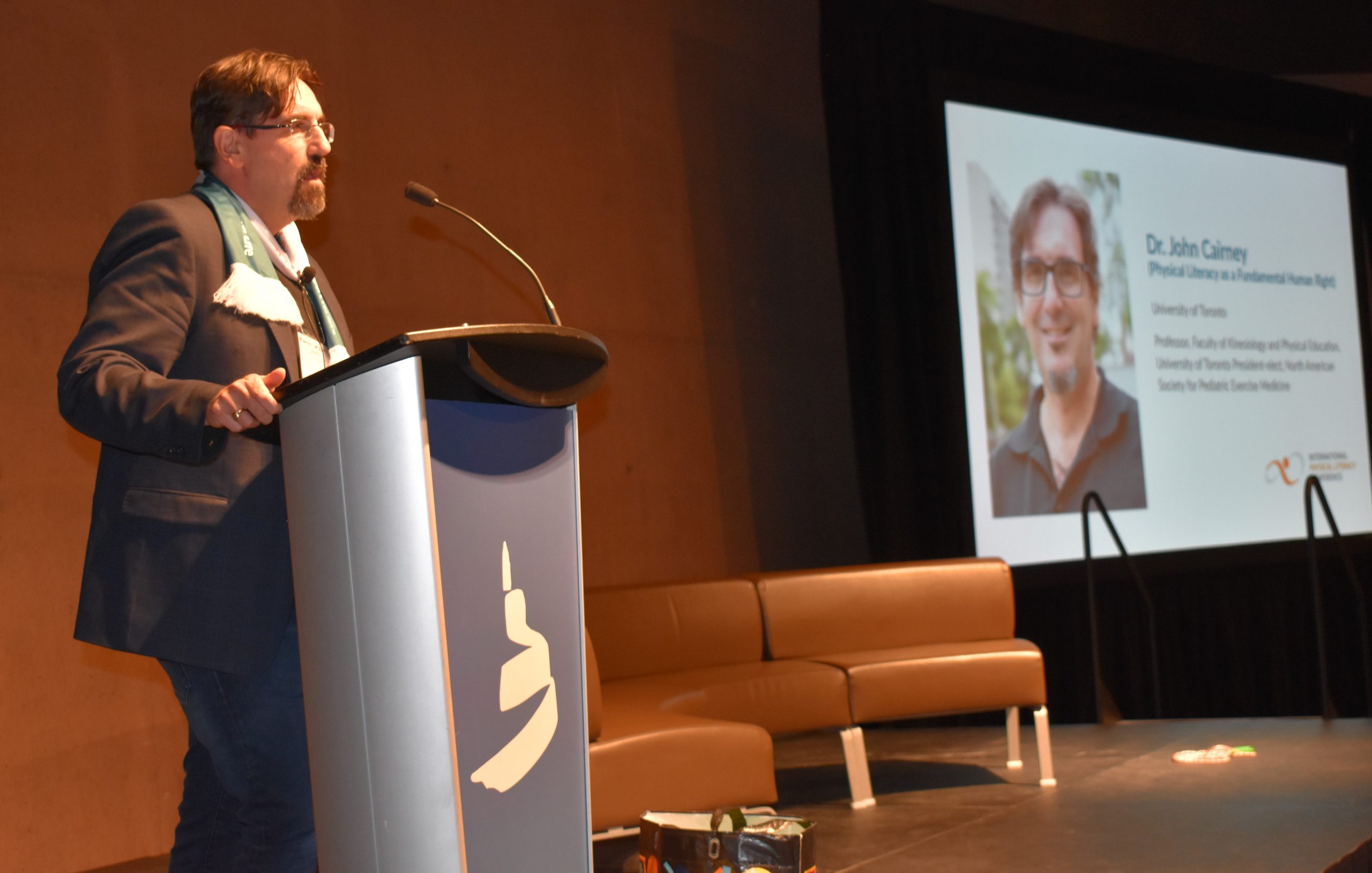Dr. John Cairney explores impact of pandemic on physical literacy delivery

There’s no disputing the fact that the COVID-19 pandemic has disrupted traditional models of sport and physical activity delivery, but according to Dr. John Cairney that’s not necessarily a bad thing. During a webinar in early June that he delivered in collaboration with Sport for Life that drew nearly 1000 registrants from around the world, he shared some of the ways organizations all over the globe have adapted, and encouraged his audience to follow suit.
“We have to look at this as an opportunity to innovate. This isn’t the only example of a major disruption that has led to innovation. If we look at the Second World War, and think about all the industrial and technological innovations that came from that, it’s actually quite similar to what we’re experiencing now,” said Cairney, who was speaking from the University of Queensland in Brisbane, Australia. He is currently a professor and the Head of School for Human Movement and Nutrition Sciences.
“And it’s wrong to think that these innovations will cease after COVID-19 passes.”
During the webinar, Cairney challenged the idea that digital modes of physical activity delivery are second-rate, and theorized that some sort of hybrid model will be used going into the future. For instance, he noted that many female users of gym facilities have reported a preference for working out from home. He believes every industry should be reflecting on this “new normal”, trying to find “gems that might be present” in current modes of delivery. Quoting American writer Dale Carnegie, he asserted that “most of the important things in the world have been accomplished by people who have kept on trying when there seemed to be no hope at all.”
Using examples such as the Nike Living Room Challenge and Peloton® Bike’s online activities, Cairney praised the companies that have found new ways to promote physical literacy and engage people from the comfort of their homes. He noted that education has made a relatively seamless switch to video-conferencing, and that the health system has seen a significant uptick in the use of TeleHealth services.
“No matter what sector or domain you’re in, we’re in the people business. Whether we’re coaching an athlete or working in public health, we’re working with people and for people. We use these technologies to stay connected to stakeholders, but do we view it as an essential component, or is it annoying and we’d rather be face to face?” he asked.
Whatever the solution, there’s a lot of money at play. Cairney noted that on a global scale $756 billion changes hands within the sports ecosystem. Since most of the industry is currently at a standstill, that leaves plenty of room for organizations to shift their delivery and collect some of those funds. However, he said it’s important to ensure “clients are not getting a second-class experience.”
“It’s clear that the rapid response innovations, not all of them have worked and not all are practices worth retaining, but important questions have emerged and we can see vulnerabilities in the way we do things in ways that we couldn’t see them before. This has really challenged our assumptions about preferred modes of engagement,” he said.
“I’m not pushing any particular agenda here. I’m just challenging and asking questions, like ‘what do hybrid models of practice look like?’ What can you imagine?”
Ultimately, he believes the work being done now will benefit all industries long-term.
“We used to think technology was nice and sexy, and we said ‘maybe let’s get on that bandwagon’ but I would put it to you now as an imperative. You look at the sport and fitness industry, and I’m not saying there will be another COVID-19, maybe for a hundred years, but there will be other disruptions and we have to ask ourselves: ‘are we disruption-proof?’ We need to speed up the adoption curve and think about how to catch up.”
The webinar recording is available here.
